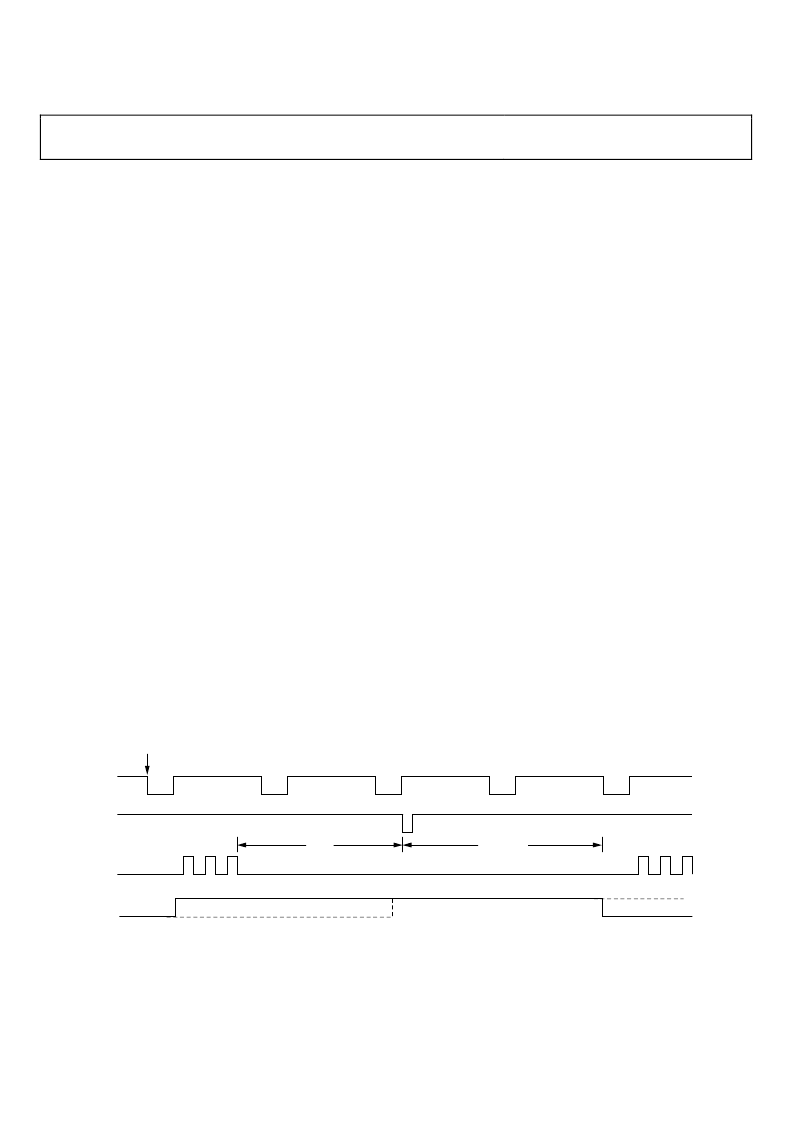- 您現在的位置:買賣IC網 > PDF目錄373970 > AD9923A (Analog Devices, Inc.) CCD Signal Processor with V-Driver and Precision Timing⑩ Generator PDF資料下載
參數資料
| 型號: | AD9923A |
| 廠商: | Analog Devices, Inc. |
| 英文描述: | CCD Signal Processor with V-Driver and Precision Timing⑩ Generator |
| 中文描述: | CCD信號處理器與V - Driver和精確定時⑩發生器 |
| 文件頁數: | 50/88頁 |
| 文件大小: | 852K |
| 代理商: | AD9923A |
第1頁第2頁第3頁第4頁第5頁第6頁第7頁第8頁第9頁第10頁第11頁第12頁第13頁第14頁第15頁第16頁第17頁第18頁第19頁第20頁第21頁第22頁第23頁第24頁第25頁第26頁第27頁第28頁第29頁第30頁第31頁第32頁第33頁第34頁第35頁第36頁第37頁第38頁第39頁第40頁第41頁第42頁第43頁第44頁第45頁第46頁第47頁第48頁第49頁當前第50頁第51頁第52頁第53頁第54頁第55頁第56頁第57頁第58頁第59頁第60頁第61頁第62頁第63頁第64頁第65頁第66頁第67頁第68頁第69頁第70頁第71頁第72頁第73頁第74頁第75頁第76頁第77頁第78頁第79頁第80頁第81頁第82頁第83頁第84頁第85頁第86頁第87頁第88頁

AD9923A
SHUT Signal Operation
SHUT signal operation is shown in Figure 68 through Figure 71.
Table 39 shows the register parameters for controlling the
SHUT signals. There are three different ways to use the SHUT
signals: automatic trigger, single trigger, and manual control.
Rev. 0 | Page 50 of 88
Automatic Trigger
Generally, SHUT signals are triggered together with an expo-
sure or readout operation, using the TRIGGER register. The
SHUT_ON and SHUT_OFF positions are fully programmable
to anywhere within the exposure period, using the field
(SHUT_ON_FD/SHUT_OFF_FD), line
(SHUT_ON_LN/SHUT_OFF_LN), and pixel
(SHUT_ON_PX/SHUT_OFF_PX) registers.
The field registers define the field in which the line and pixel
values are used, with respect to the value of the exposure counter.
The on and off positions can occur as soon as the field contains
the last SUBCK (Exposure Field 0), or as late as the final exposure
field before the readout begins. Separate field registers allow the
on and off positions to occur in different exposure fields.
Single Trigger
SHUT signals can be triggered without triggering an exposure
or readout operation. In this case, SHUT signals are triggered
using the TRIGGER register, but the exposure bit is not triggered.
Both the SHUT on and off positions occur in the next field, and
the SHUT_ON_FD/SHUT_OFF_FD register values are ignored.
Single trigger operation is useful if a pulse is required immedi-
ately in the next field without the occurrence of an exposure or
readout operation. Also, single trigger operation is useful when
the exposure or readout operation is manually generated without
using the TRIGGER register, and the SUBCK and VSG masking
are manually controlled.
Note that single trigger operation cannot occur if an exposure
operation has been triggered. SHUT signals behave in automatic
trigger mode if they, and an exposure operation, have been
triggered.
Manual Control
Any SHUT signal can be controlled in manual control mode,
instead of using the TRIGGER register to activate it. In this
mode, the individual on and off lines and pixel positions are
used separately, depending on the status of the manual signal
control register. Note that only a single toggle position, either
off or on, can be used in a VD interval.
As with single trigger operation, when manual control is
enabled, the SHUT_ON_FD/SHUT_OFF_FD register values
are ignored.
Because there is a separate bit to enable manual control on
SHUT signals, this operation can be used regardless of the
status of a triggered exposure operation.
Note that manual control can be used in conjunction with
automatic or single trigger operations. If a SHUT signal is turned
on using manual control, and then manual control is disabled,
the SHUT signal remains on. If a subsequent trigger operation
occurs, the on position toggle is ignored, because the signal is
already on. In this case, only the off position can be triggered.
VD
SUBCK
VSUB OPERATION:
1
ACTIVE POLARITY IS DEFINED BY VSUBPOL (ABOVE EXAMPLE IS VSUB ACTIVE HIGH).
2
ON POSITION IS PROGRAMMABLE, MODE 0 TURNS ON AT THE START OF EXPOSURE, MODE 1 TURNS ON AT THE START OF READOUT.
3
OFF POSITION OCCURS AT END OF READOUT.
4
OPTIONAL VSUB KEEP-ON MODE LEAVES THE VSUB ACTIVE AT THE END OF THE READOUT.
VSG1
VSUB
3
1
2
2
4
MODE 0
MODE 1
TRIGGER
VSUB
t
EXP
READOUT
0
Figure 67. VSUB0, VSUB1 Signal Programmability
相關PDF資料 |
PDF描述 |
|---|---|
| AD9923ABBCZ | CCD Signal Processor with V-Driver and Precision Timing⑩ Generator |
| AD9923ABBCZRL | CCD Signal Processor with V-Driver and Precision Timing⑩ Generator |
| AD9925BBCZRL | CCD Signal Processor with Vertical Driver and Precision Timing Generator |
| AD9925 | CCD Signal Processor with Vertical Driver and Precision Timing Generator |
| AD9925BBCZ | CCD Signal Processor with Vertical Driver and Precision Timing Generator |
相關代理商/技術參數 |
參數描述 |
|---|---|
| AD9923ABBCZ | 功能描述:IC PROCESSOR CCD 12BIT 105CSPBGA RoHS:是 類別:集成電路 (IC) >> 接口 - 傳感器和探測器接口 系列:- 其它有關文件:Automotive Product Guide 產品培訓模塊:Lead (SnPb) Finish for COTS Obsolescence Mitigation Program 標準包裝:74 系列:- 類型:觸控式傳感器 輸入類型:數字 輸出類型:數字 接口:JTAG,串行 電流 - 電源:100µA 安裝類型:表面貼裝 封裝/外殼:20-TSSOP(0.173",4.40mm 寬) 供應商設備封裝:20-TSSOP 包裝:管件 |
| AD9923ABBCZRL | 功能描述:IC PROCESSOR CCD 12BIT 105CSPBGA RoHS:是 類別:集成電路 (IC) >> 接口 - 傳感器和探測器接口 系列:- 其它有關文件:Automotive Product Guide 產品培訓模塊:Lead (SnPb) Finish for COTS Obsolescence Mitigation Program 標準包裝:74 系列:- 類型:觸控式傳感器 輸入類型:數字 輸出類型:數字 接口:JTAG,串行 電流 - 電源:100µA 安裝類型:表面貼裝 封裝/外殼:20-TSSOP(0.173",4.40mm 寬) 供應商設備封裝:20-TSSOP 包裝:管件 |
| AD9923BBCZ | 制造商:Rochester Electronics LLC 功能描述:- Bulk 制造商:Analog Devices 功能描述: |
| AD9923BBCZRL | 制造商:Rochester Electronics LLC 功能描述: 制造商:Analog Devices 功能描述: |
| AD9924BBCZ | 制造商:Analog Devices 功能描述: |
發布緊急采購,3分鐘左右您將得到回復。